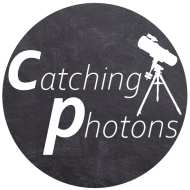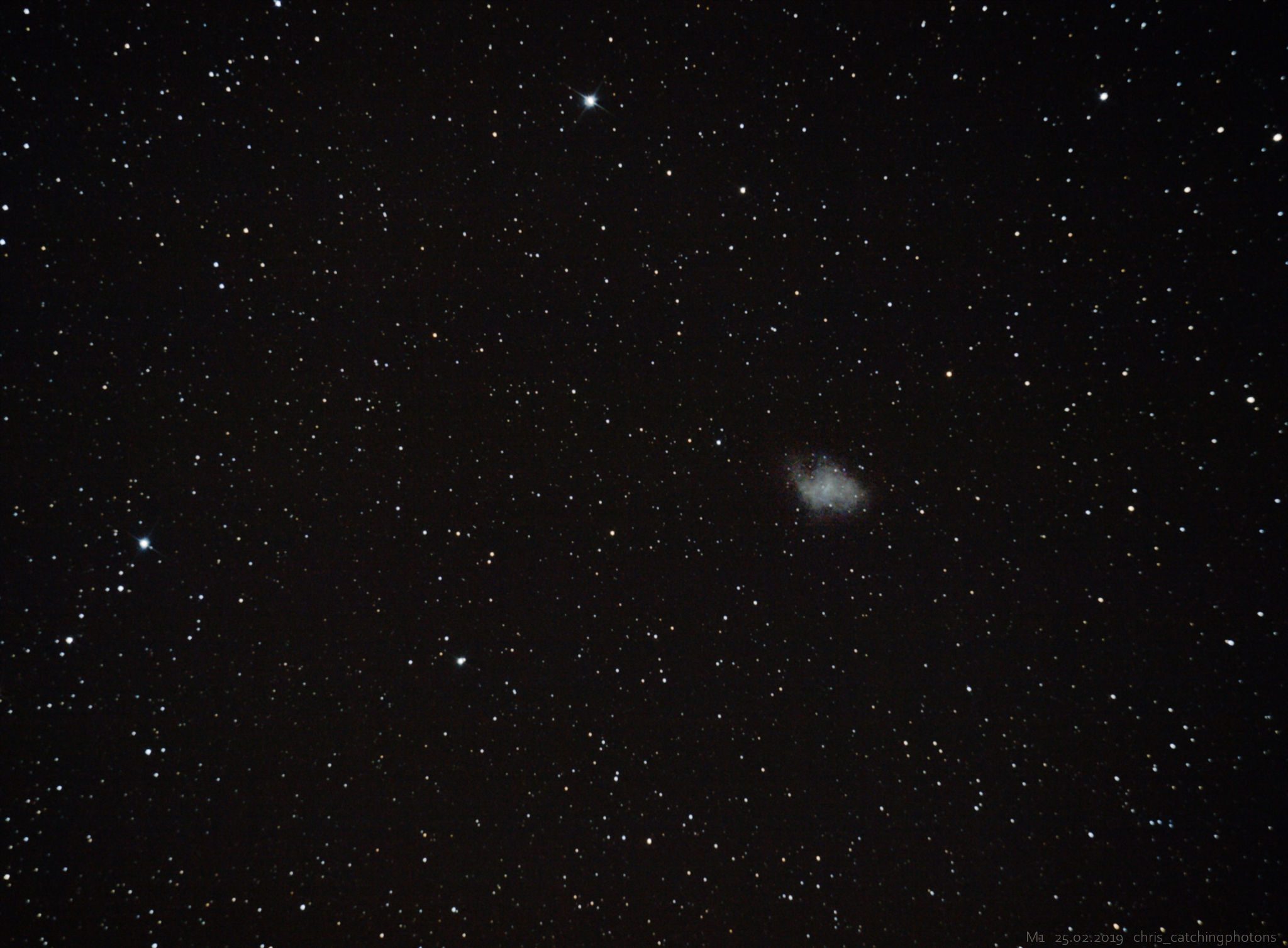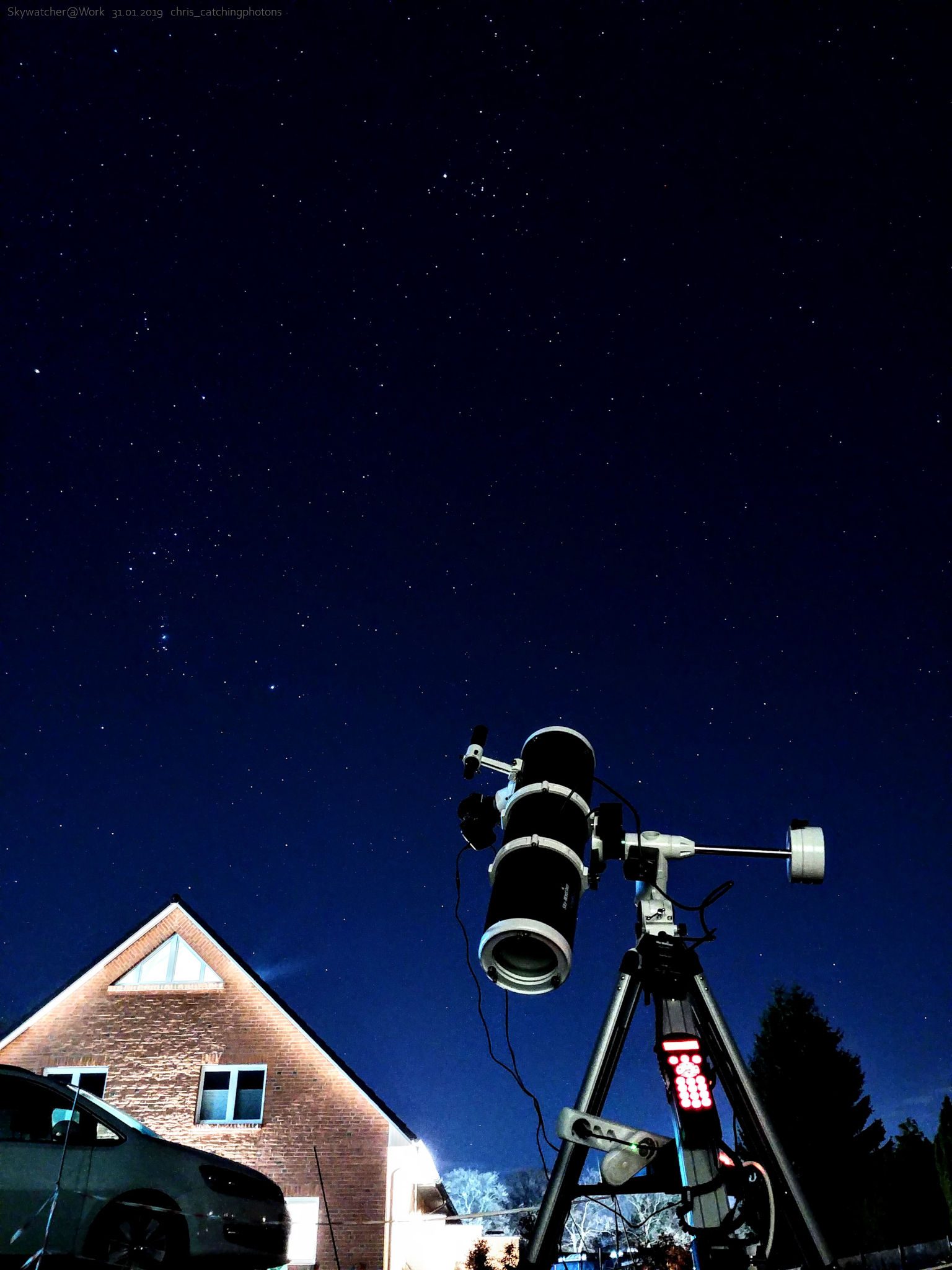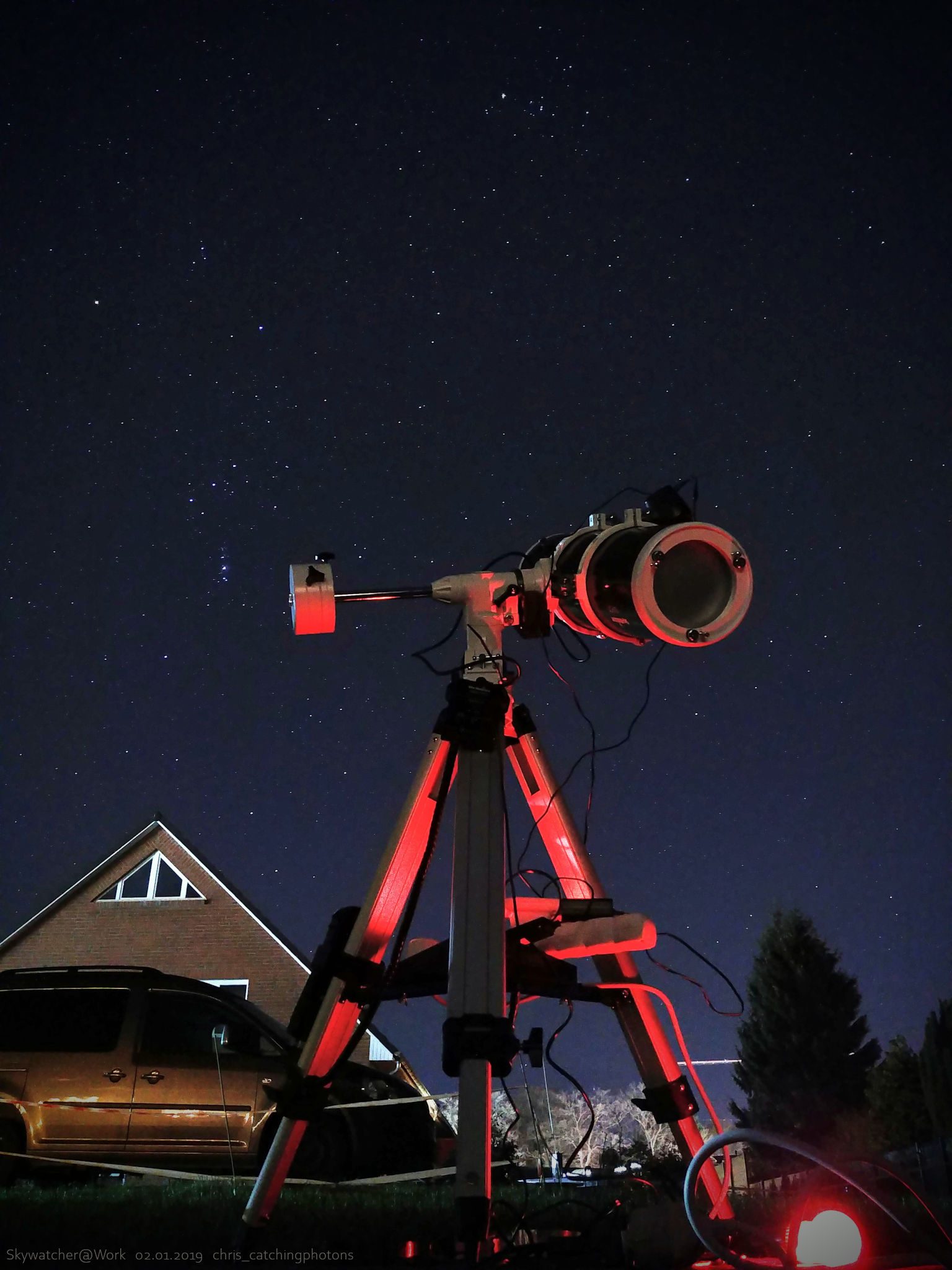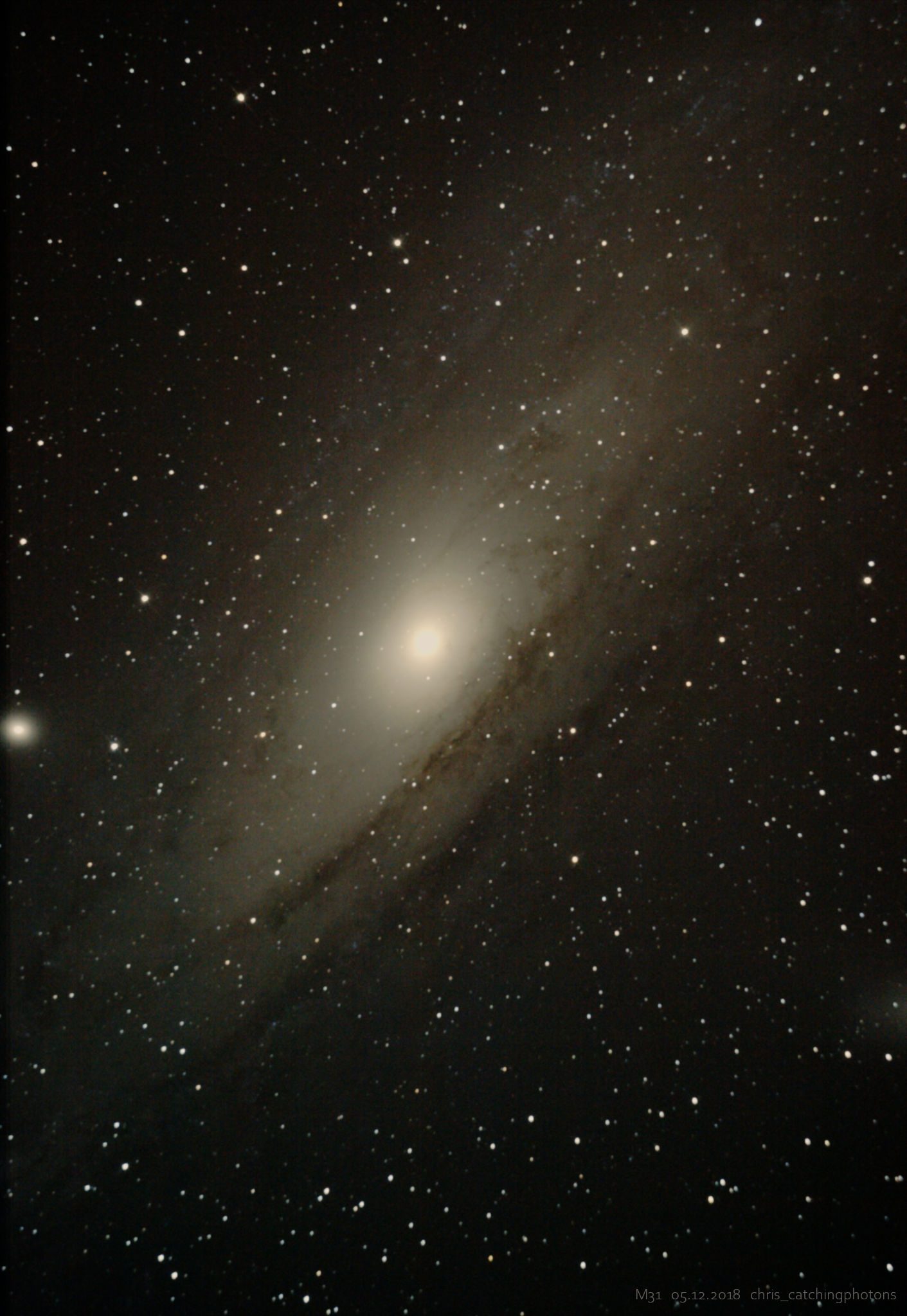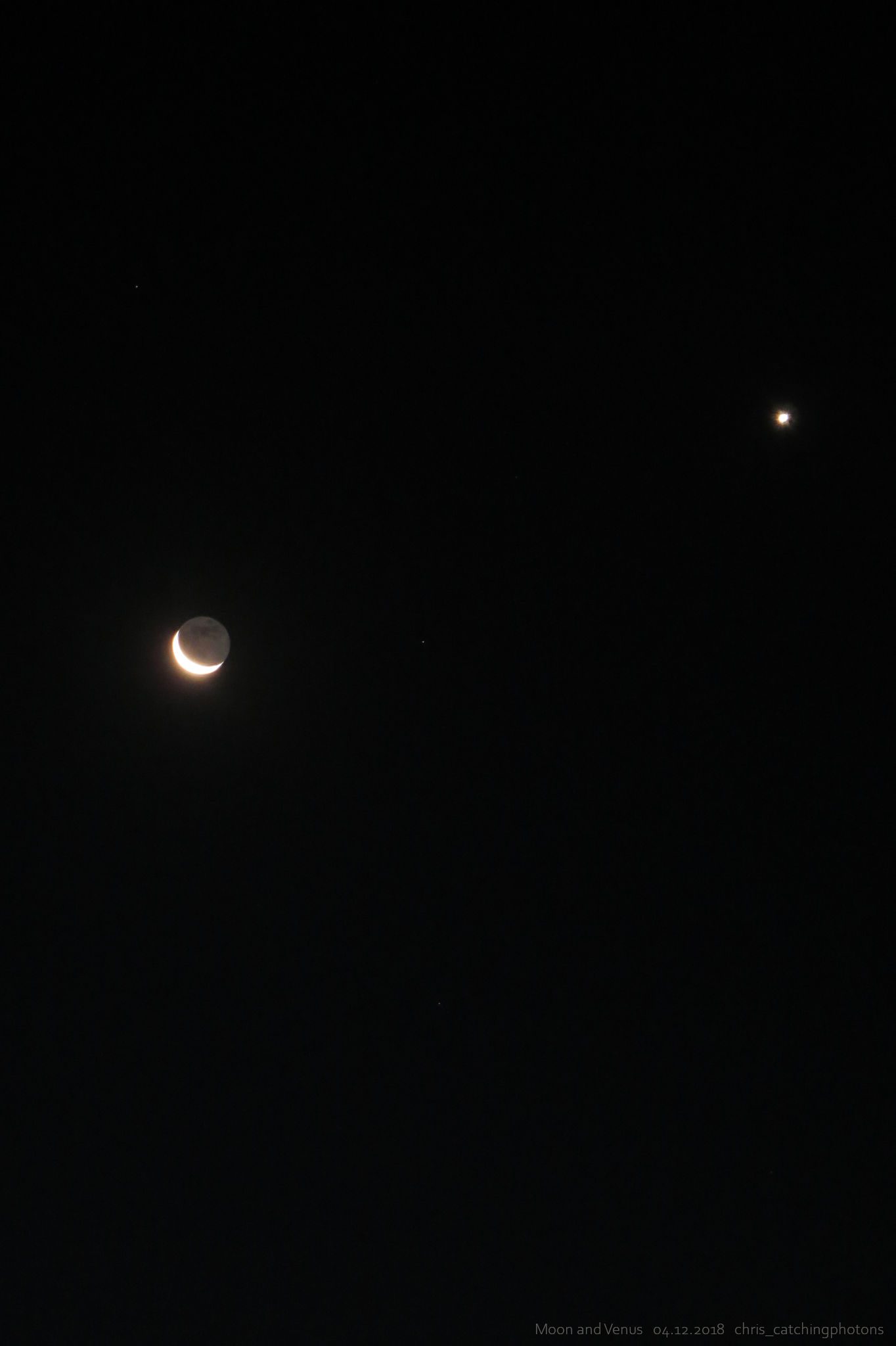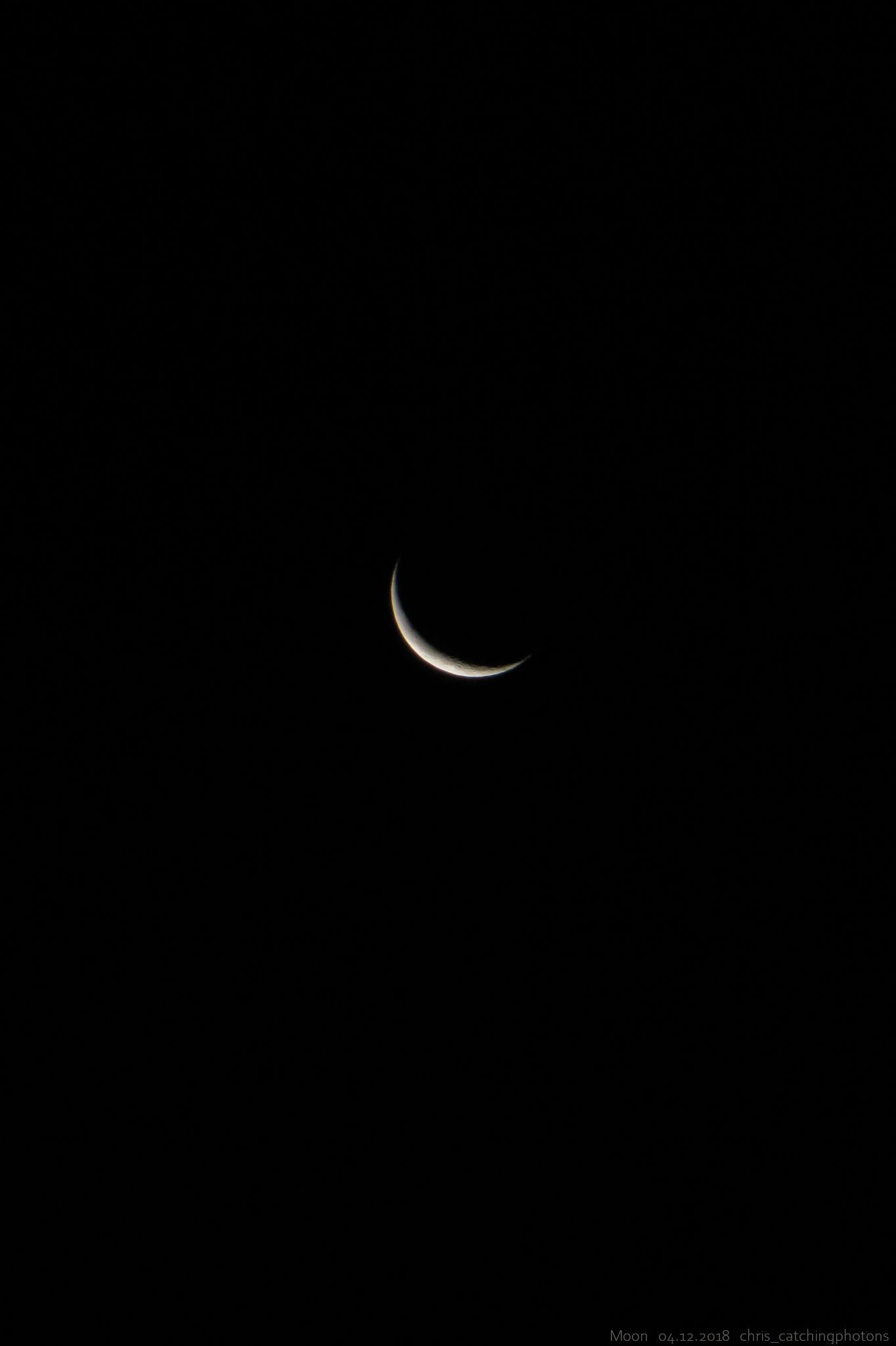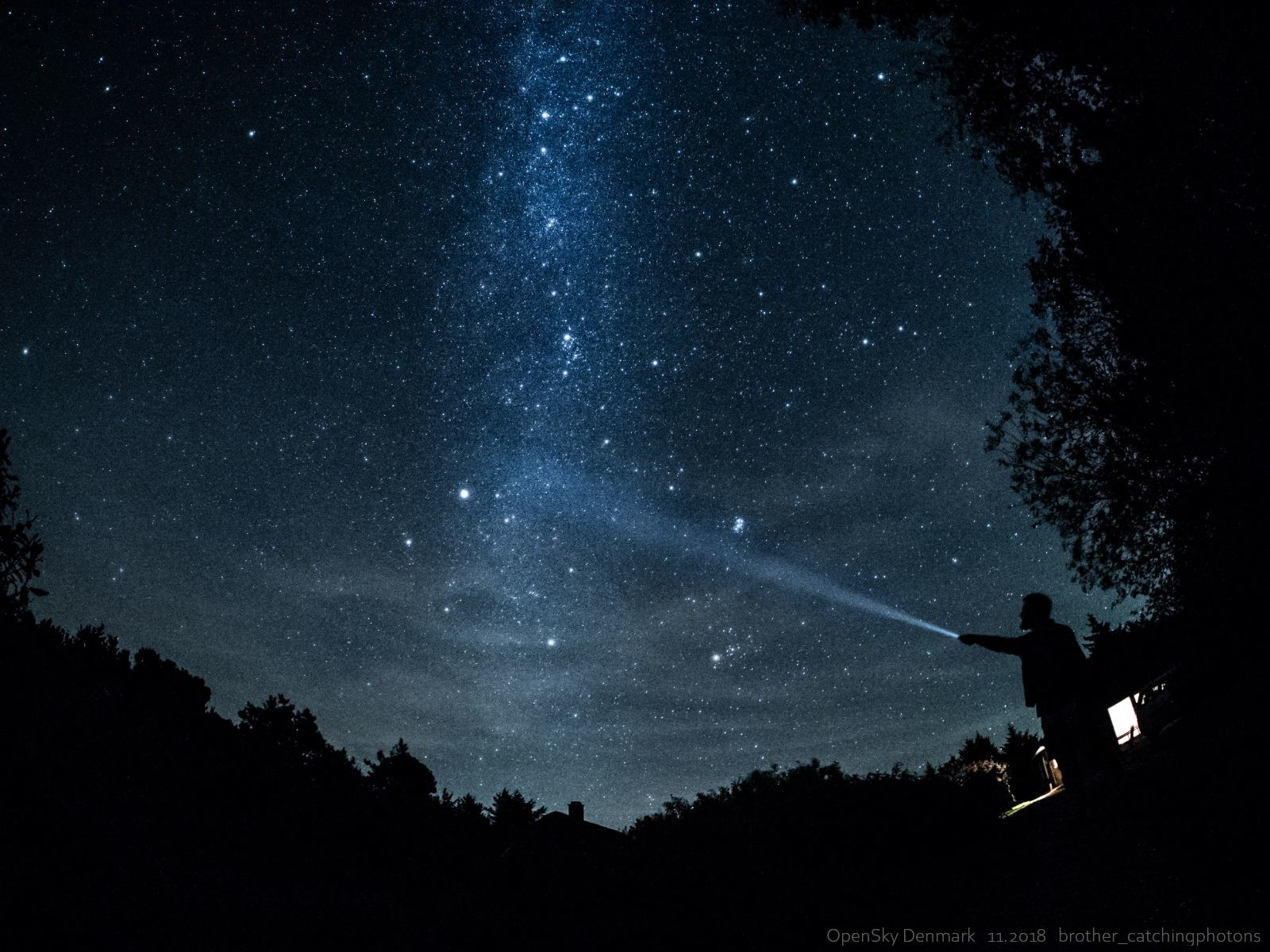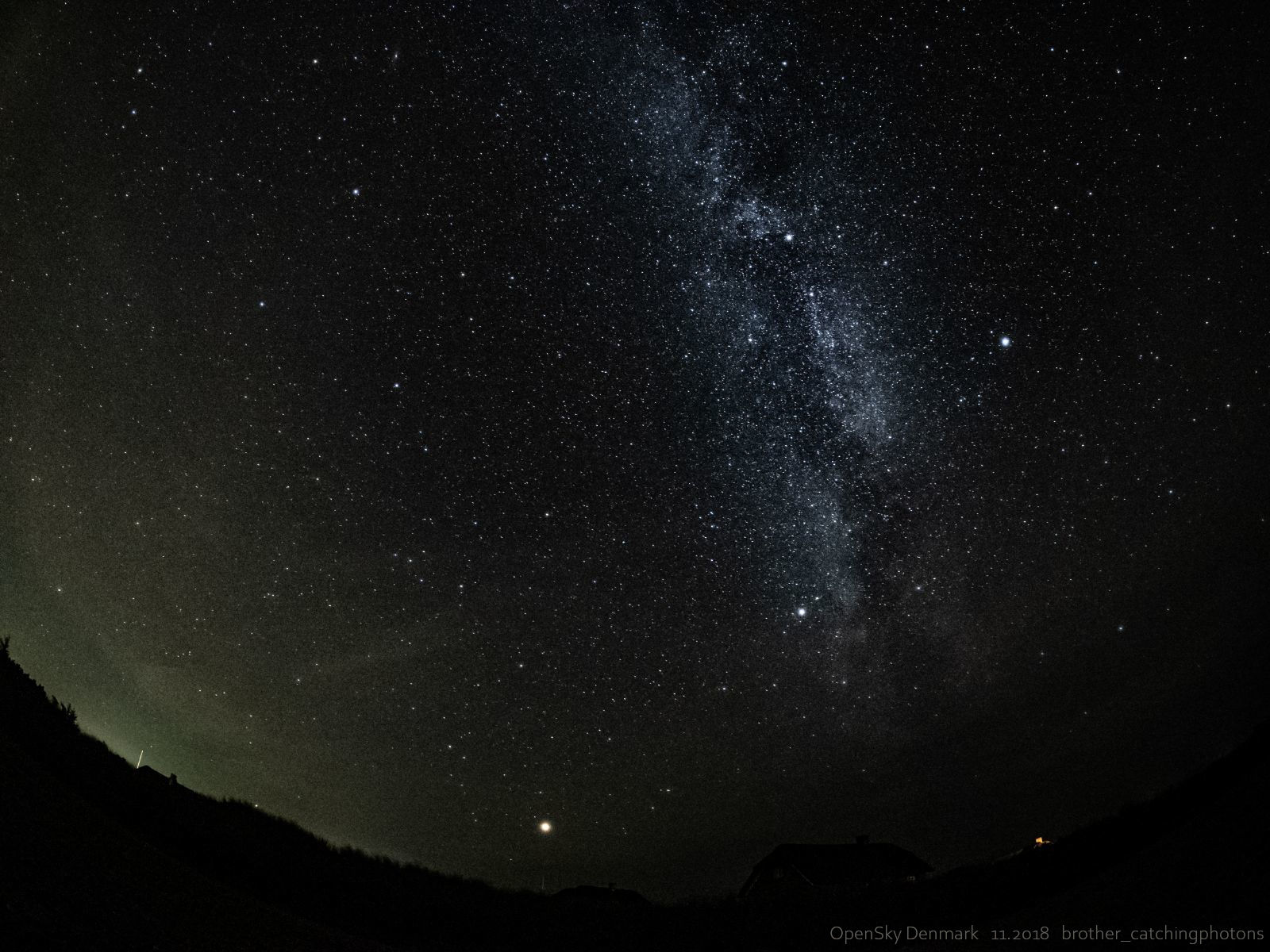31.03.2019
New aspect: Trying autoguiding for the first time
Guiding basics:
During the last sessions I slowly build up the dream of autoguiding my images. There are many advantages of having a guidecam with a guidescope attached to your main scope.
- The ability to use the guidescope for advanced polar alignment in phd2. There you use the attached scope to trace movements of stars to determine the polar alignment offset. Phd2 is then able (because it’s clever) to give informations about with direction you need to nudge the scope in order to perfect the alignment.
- The ability to use the guidescope with its cam to plate solve. Plate solving is the ability of the PC to count the stars on a given image and compare it to a given database in order to determine the current position of that image in the night sky and give a set of coordinates as an output. Some of you might ask: Why not use the main camera for that? Well, upon now I used the old Olympus E510. This camera can not easiely be controlled by a PC. So in order to use the main imaging cam for plate solving I would have to take a picture, grab the CF-card, transfer the image to the laptop… Long story short: once set up, I don’t want to touch the main camera any more (focus!). Problem is: I need to align the polar scope and the main imaging scope properly in order to use the plate solving abilities sufficiently.
-
Last but not
least: The ability to guide with phd2 to
- increase the exposure time! I was up to 60 seconds on lucky sessions, others were more like 50 seconds.
- stabilize the framing. Without guiding I had the problem that the image would shift ever so slightly. Even when 60 seconds would give me pin point stars, a night long session would result in a noticeable movement of say half a screen! So I needed to go out and slew back to the original position from time to time. With guiding phd2 would check that for me.
- increase the reliability of the system. Without guiding I used say 1/3 of the images max! Some sessions were down to one image out of every 5 frames or so. That was due to bad alignment and other imperfections of my mount. Increasing this quota would give me much more data on a given target!
